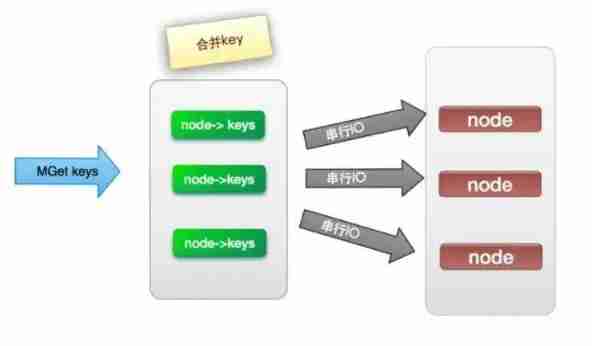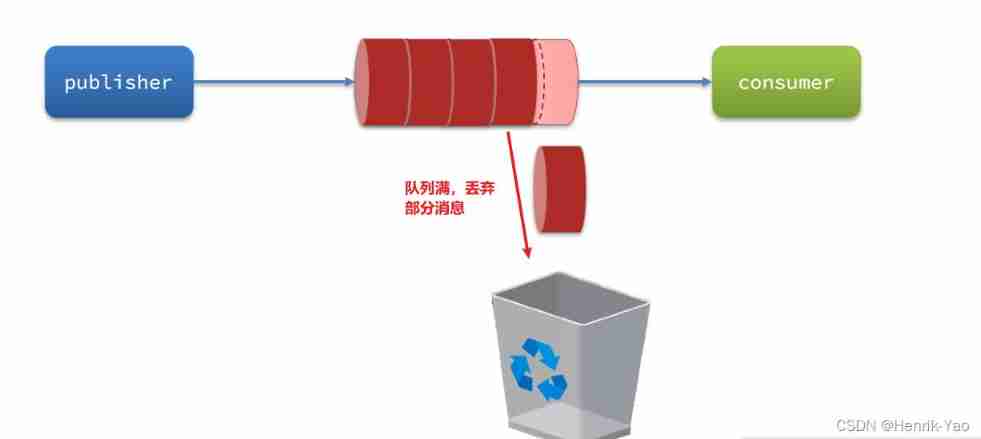一个偶然的机会接触到了golang,被它的高并发传说所吸引,就开始学这门语言,越学感觉越有意思^_^
注册了博客园这么多年,第一次写东西,年纪大了,脑子不好使了,就得写下来,记下来,为了自己以后查阅,同时也分享给golang的爱好者。
gnet 在CSDN上的介绍如下:https://blog.csdn.net/qq_31967569/article/details/103107707
github v1版本的开源地址为:https://github.com/panjf2000/gnet
详细介绍看这里,英文版的有各个模块的介绍,较详细:https://pkg.go.dev/github.com/panjf2000/gnet?GOOS=windows#Option
gnet作者潘少是国内一枚年轻大帅哥^_^,在知乎上对gnet这个框架有不同的观点,说什么的也有,有不同的声音,是好事,喜欢就用,不喜欢就不用,请尊重开源作者。开源作者对go社区的贡献有目共睹。下面记录一下我在使用中的一些笔记。
先记录一下Options,为便于查询,保留原始英文备注
type Options struct {
// Multicore indicates whether the server will be effectively created with multi-cores, if so,
// then you must take care with synchronizing memory between all event callbacks, otherwise,
// it will run the server with single thread. The number of threads in the server will be automatically
// assigned to the value of logical CPUs usable by the current process.
// Multicore 表示服务器是否将有效地使用多核创建,如果是,则必须注意在所有事件回调之间同步内存,否则它将以单线程运行服务器。
// 服务器中的线程数将自动分配给当前进程可用的逻辑 CPU 的值。
Multicore bool
// NumEventLoop is set up to start the given number of event-loop goroutine.
// NumEventLoop 设置为启动给定数量的event-loop goroutine,也就是 sub reactor的数量----这个参数的说明我特意私下请教过潘少
// Note: Setting up NumEventLoop will override Multicore.
// 这个要注意,如果设置了NumEventLoop的值,那么Multicored 的参数将会被覆盖,潘少给的答复是一般用NumEventLoop这个参数,Multicore和NumEventLoop用哪个参数都行,需要自行在生产压力测试的时候验证
// NumEventLoop的值设置多少合适,也是经验值,需根据实际情况调整,使用这可以放在配置文件中,便于生产环境中随时调整而不需要修改代码
NumEventLoop int
// LB represents the load-balancing algorithm used when assigning new connections.
LB LoadBalancing
// ReuseAddr indicates whether to set up the SO_REUSEADDR socket option.
ReuseAddr bool
// ReusePort indicates whether to set up the SO_REUSEPORT socket option.
ReusePort bool
// ReadBufferCap is the maximum number of bytes that can be read from the peer when the readable event comes.
// The default value is 64KB, it can be reduced to avoid starving the subsequent connections.
// Note that ReadBufferCap will always be converted to the least power of two integer value greater than
// or equal to its real amount.
ReadBufferCap int
// LockOSThread is used to determine whether each I/O event-loop is associated to an OS thread, it is useful when you
// need some kind of mechanisms like thread local storage, or invoke certain C libraries (such as graphics lib: GLib)
// that require thread-level manipulation via cgo, or want all I/O event-loops to actually run in parallel for a
// potential higher performance.
LockOSThread bool
// Ticker indicates whether the ticker has been set up.
Ticker bool
// TCPKeepAlive sets up a duration for (SO_KEEPALIVE) socket option.
TCPKeepAlive time.Duration
// TCPNoDelay controls whether the operating system should delay
// packet transmission in hopes of sending fewer packets (Nagle's algorithm).
// The default is true (no delay), meaning that data is sent
// as soon as possible after a write operation.
TCPNoDelay TCPSocketOpt
// SocketRecvBuffer sets the maximum socket receive buffer in bytes.
SocketRecvBuffer int
// SocketSendBuffer sets the maximum socket send buffer in bytes.
SocketSendBuffer int
// ICodec encodes and decodes TCP stream.
Codec ICodec
// LogPath the local path where logs will be written, this is the easiest way to set up logging,
// gnet instantiates a default uber-go/zap logger with this given log path, you are also allowed to employ
// you own logger during the lifetime by implementing the following log.Logger interface.
// Note that this option can be overridden by the option Logger.
LogPath string
// LogLevel indicates the logging level, it should be used along with LogPath.
LogLevel logging.Level
// Logger is the customized logger for logging info, if it is not set,
// then gnet will use the default logger powered by go.uber.org/zap.
Logger logging.Logger
}再看一下EventHandler
type EventHandler interface {
// OnInitComplete fires when the server is ready for accepting connections.
// The parameter server has information and various utilities.
OnInitComplete(server Server) (action Action)
// OnShutdown fires when the server is being shut down, it is called right after
// all event-loops and connections are closed.
OnShutdown(server Server)
// OnOpened fires when a new connection has been opened.
// The Conn c has information about the connection such as it's local and remote address.
// The parameter out is the return value which is going to be sent back to the peer.
// It is usually not recommended to send large amounts of data back to the peer in OnOpened.
// Note that the bytes returned by OnOpened will be sent back to the peer without being encoded.
OnOpened(c Conn) (out []byte, action Action)
// OnClosed fires when a connection has been closed.
// The parameter err is the last known connection error.
OnClosed(c Conn, err error) (action Action)
// PreWrite fires just before a packet is written to the peer socket, this event function is usually where
// you put some code of logging/counting/reporting or any fore operations before writing data to the peer.
PreWrite(c Conn)
// AfterWrite fires right after a packet is written to the peer socket, this event function is usually where
// you put the []byte returned from React() back to your memory pool.
AfterWrite(c Conn, b []byte)
// React fires when a socket receives data from the peer.
// Call c.Read() or c.ReadN(n) of Conn c to read incoming data from the peer.
// The parameter out is the return value which is going to be sent back to the peer.
// Note that the parameter packet returned from React() is not allowed to be passed to a new goroutine,
// as this []byte will be reused within event-loop after React() returns.
// If you have to use packet in a new goroutine, then you need to make a copy of buf and pass this copy
// to that new goroutine.
// 我们的业务处理应该就是对packet中数据的处理,需要注意的是,如果业务处理放在新的goroutine中执行,那么需要将复制packet的副本传递进去
// 具体为什么,作者没说,我猜测可能是因为切片属于引用类型,新的gorountine的生命周期会影响整个gnet的工作
React(packet []byte, c Conn) (out []byte, action Action)
// Tick fires immediately after the server starts and will fire again
// following the duration specified by the delay return value.
Tick() (delay time.Duration, action Action)
}
下面是官方给的带阻塞的使用方法,使用了pool
package main import (
"log"
"time" "github.com/panjf2000/gnet"
"github.com/panjf2000/gnet/pool"
) type echoServer struct {
*gnet.EventServer
pool *pool.WorkerPool
} func (es *echoServer) React(c gnet.Conn) (out []byte, action gnet.Action) {
data := append([]byte{}, c.Read()...)
c.ResetBuffer() // Use ants pool to unblock the event-loop.
_ = es.pool.Submit( func () {
time.Sleep(1 * time.Second)
c.AsyncWrite(data)
}) return
} func main() {
p := pool.NewWorkerPool()
defer p.Release() echo := &echoServer{pool: p}
log.Fatal(gnet.Serve(echo, "tcp://:9000" , gnet.WithMulticore(true)))
}
在Ubuntu上压测过,单台连接过6万结点,很轻松,当然,这个连接是没有任何业务处理的。仅仅是一个echo的测试。注意,在Ubuntu上测试的时候 需要修改 ulimite的值,默认1024太小。修改ulimite值的方法自行搜索。
目前遇到的问题是,options参数为 gnet.WithMulticore(true) 时,在windows上压测的时候,从任务管理器上看,gnet创建了很多线程,即使所有客户端都断开,这些线程也不减少,这个不知道什么原因。我私下请教过作者,作者说,windows平台下仅用于开发调试,不能用于生产。
gnet: 一个轻量级且高性能的 Go 网络框架 使用笔记的更多相关文章
- [开源] gnet: 一个轻量级且高性能的 Golang 网络库
Github 主页 https://github.com/panjf2000/gnet 欢迎大家围观~~,目前还在持续更新,感兴趣的话可以 star 一下暗中观察哦. 简介 gnet 是一个基于 Ev ...
- 开源一个简易轻量的reactor网络框架
github https://github.com/sea-boat/net-reactor net-reactor it's a simple and easy net framework with ...
- Dapeng框架-开源高性能分布式微服务框架
我们公司性质是新零售,公司也有专门的框架组.这群大牛自己开发了一整套分布式微服务框架.我们也在使用这套框架,有很多心得体会. 该框架既Dapeng也!开源github地址:https://github ...
- Voovan 是一个高性能异步网络框架和 HTTP(Java)
Voovan 是一个高性能异步网络框架和 HTTP 服务器框架,同时支持 HTTP 客户端抓取.动态编译支持.数据库访问封装以及 DateTime.String.Log.反射.对象工具.流操作.文件操 ...
- 一个轻量级分布式RPC框架--NettyRpc
1.背景 最近在搜索Netty和Zookeeper方面的文章时,看到了这篇文章<轻量级分布式 RPC 框架>,作者用Zookeeper.Netty和Spring写了一个轻量级的分布式RPC ...
- 如何用Netty实现一个轻量级的HTTP代理服务器
为什么会想通过Netty构建一个HTTP代理服务器?这也是笔者发表这篇文章的目的所在. 其主要还是源于解决在日常开发测试过程中,一直困扰测试同学很久的一个问题,现在我就来具体阐述一下这个问题. 在日常 ...
- 一个轻量级分布式 RPC 框架 — NettyRpc
原文出处: 阿凡卢 1.背景 最近在搜索Netty和Zookeeper方面的文章时,看到了这篇文章<轻量级分布式 RPC 框架>,作者用Zookeeper.Netty和Spring写了一个 ...
- 自己动手,开发轻量级,高性能http服务器。
前言 http协议是互联网上使用最广泛的通讯协议了.web通讯也是基于http协议:对应c#开发者来说,asp.net core是最新的开发web应用平台.由于最近要开发一套人脸识别系统,对通讯效率的 ...
- 专注于HTTP的高性能高易用性网络库:Fslib.network库
博客列表页:http://blog.fishlee.net/tag/fslib-network/ 原创FSLib.Network库(目前专注于HTTP的高性能高易用性网络库) FSLib.Networ ...
- SSDB是一个开源的高性能数据库服务器
SSDB是一个开源的高性能数据库服务器, 使用Google LevelDB作为存储引擎, 支持T级别的数据, 同时支持类似Redis中的zset和hash等数据结构, 在同时需求高性能和大数据的条件下 ...
随机推荐
- iOS微信第三方登录实现
iOS微信第三方登录实现 一.接入微信第三方登录准备工作.移动应用微信登录是基于OAuth2.0协议标准构建的微信OAuth2.0授权登录系统.在进行微信OAuth2.0授权登录接入之前,在微信开 ...
- 【.net 深呼吸】使用二进制格式来压缩XML文档
在相当多的情况下,咱们写入XML文件默认是使用文本格式来写入的,如果XML内容是通过网络传输,或者希望节省空间,特别是对于XML文档较大的情况,是得考虑尽可能地压缩XML文件的大小. XmlDicti ...
- codeforces 340A The Wall(简单数学题)
题意:输入a,b,x,y,a,b分别是两人的步数(每a块砖,刷一次),则有一些砖被两人同时刷到了,问[x,y]区间内有多少块砖同时被两人刷到. 分析:就是求[x,y]中有多少个能把a,b的最小公倍数l ...
- ./wls1036_linux32.bin: /lib/ld-linux.so.2: bad ELF interpreter
[CentOS]安装软件:/lib/ld-linux.so.2: bad ELF interpreter解决 环境: [[email protected] Downloads]$ uname -m ...
- HNOI2002 营业额统计(Splay Tree)
题目:http://www.lydsy.com/JudgeOnline/problem.php?id=1588 题意: Tiger最近被公司升任为营业部经理,他上任后接受公司交给的第一项任务便是统计并 ...
- Glad You Came hdu-6356(ST表 || 线段树)
第一种用线段树,用两颗数维护区间最大值和区间的最小值,然后更新的时候如果我目前区间内的最大值比我得到的v小,那么我就把这个区间修改成v,如果我的最小值比v大,那么v就是没有用的,直接跳过,然后这样每次 ...
- linux内存不足,swap交换分区创建
为什么需要swap 根 据Redhat公司的建议,Linux系统swap分区最适合的大小是物理内存的1-2倍.不过Linux上有些软件对swap分区得需求较大,例如要顺 利执行Oracle数据库软件, ...
- 【笔记】metasploit渗透测试魔鬼训练营-信息搜集
exploit 漏洞利用代码 编码器模块:免杀.控制 help [cmd] msfcli适合对网络中大量系统统一测试. 打开数据包路由转发功能:/etc/sysctl.conf /etc/rc.loc ...
- openvswitch dpdk
作者:张华 发表于:2016-04-07版权声明:可以任意转载,转载时请务必以超链接形式标明文章原始出处和作者信息及本版权声明 ( http://blog.csdn.net/quqi99 ) 硬件要 ...
- (转)extern关键字两种场景的使用
第一种场景 -- extern extern关键字的作用是声明变量和函数为外部链接,即该变量或函数名在其它文件中可见.用其声明的变量或函数应该在别的文件或同一文件的其它地方定义. 例如语句:exter ...




![[C language] dynamic address book](/img/e7/ca1030a1099fe1f59f5d8dd722fdb7.jpg)



